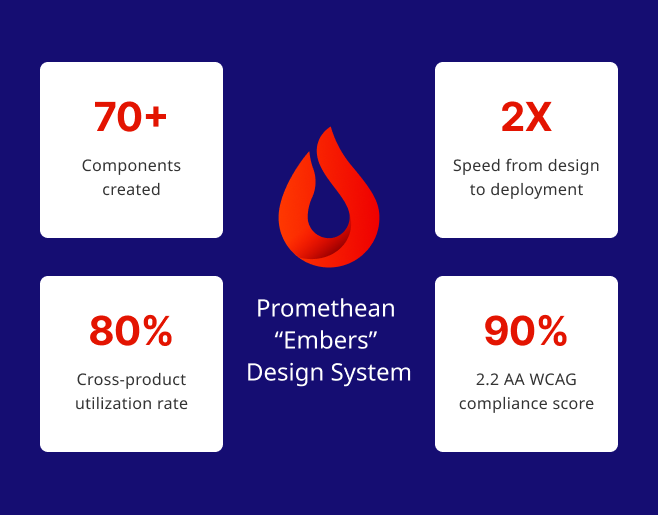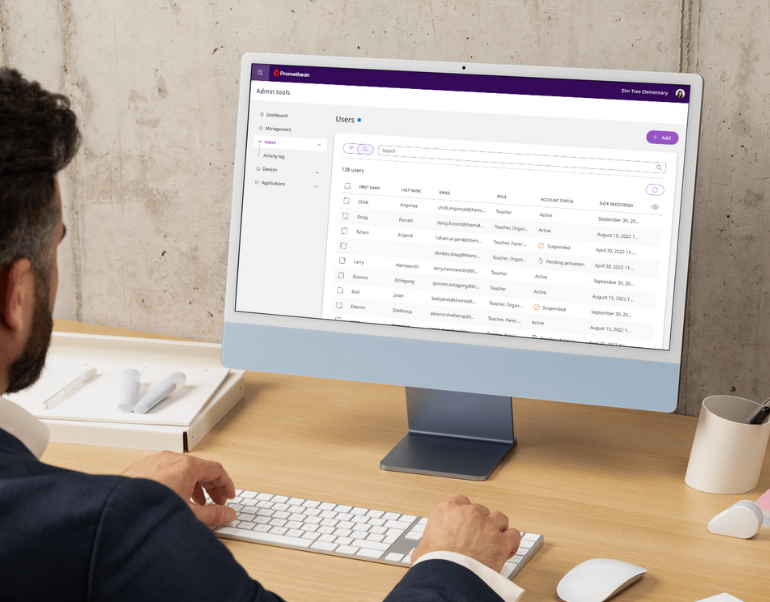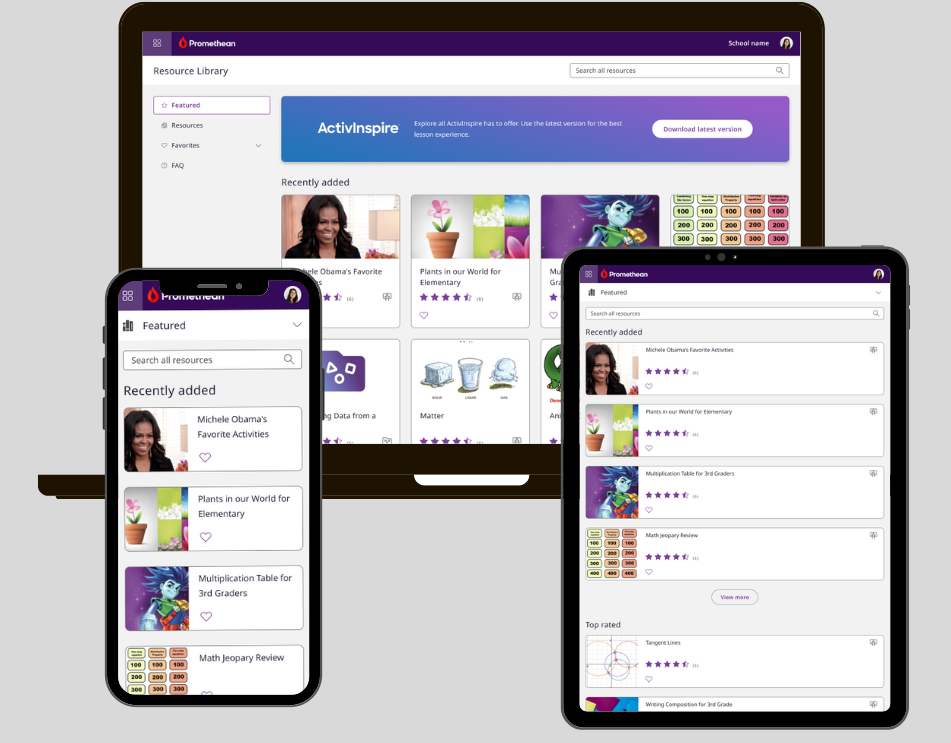Innovative Grading
A data-informed grading system that allows students the freedom to make mistakes.
"In the real world, the smartest people are people who make mistakes and learn. In school, the smartest people don't make mistakes." Robert Kiyosani
About the Project
This project was completed for the Bentonville Public School District.
Problem: The traditional grading system is outdated, biased, detrimental to student success, and fails to accurately reflect how humans learn. The highest grades often go to students who make the fewest mistakes, while in real life, making mistakes is essential for personal growth and success.
My Role: What began as a solo service design project evolved into something more—this approach was shared in a presentation to the school district, which ultimately led to the formation of a collaborative Innovative grading team.
Project Duration: 3 years
Methodologies: brainstorming, research, user interviews, user surveys, field studies, proto-personas, user testing, qualitative and quantitive data analysis
Collaborative Team: Jacqui Lovejoy, Matt Saferite, Heather Crumpler, Kim Fernandez, Micheal Williams, Joseph Herrington, Lori Jenson, and Bryant Baker
This project was Sparked by a Story, That uncovered a bias, which inspired a Change.
Research
Research into the traditional grading system, its origins, and policies (unchanged since 1897) involved reviewing blogs, articles, books, and attending a seminar on grading practices. Key insights were refined to align with the criteria set by the Arkansas State, board of education, administrators, teachers, parents, and students.
Key Insights
Grades should reflect a student’s final understanding, not the learning process.
The grading scale is flawed. We have 10-9 percentage points dedicated to each letter grade (A-D). But have 59 percentage points dedicated to the student failing (F).
Students learn in different ways and at different times. They need multiple opportunities to demonstrate their understanding.
Homework completion and performance should not be included in a student’s grade because it it inequitable. Homework denies a low income student points because they do not have the resources (ex: internet) at home, which is unfair.
Students need to understand the path to success, which enables them to better engage in their own learning.
Focus should be on learning and mastery. Striving for mastery is an intrinsic motivator and transforms student attitudes.
Scores go up as students learn. This creates an emotionally safe environment where students are encouraged to stretch themselves, make mistakes, and learn. (in the traditional system a students grades fall as they make mistakes so the students with the fewest mistakes end up with the highest grades)
Hypothesis
If a grading system is designed based on a growth mindset philosophy, then students will be empowered to make mistakes and learn. We will know this grading system was successful when we see an increase in student grades, engagement, and ownership of their learning.
Solution
Design and implement a new grading system that successfully reflects student growth and learning by removing homework, transforming all learning assignments into practices, and assessing students at the end of the learning, not as it occurs.
Onboarding (Student, Teacher, Parent, Administrators)
Clear communication is essential. Students need a deep understanding of the new grading system to address parent questions. Parents should grasp the basics to interpret gradebook data. Administrators must be informed to support parents, while teachers need to understand both the system's use and the rationale behind it.
Innovative was revised over three years to address the needs of students, teachers, and parents while aligning with the goals and expectations of stakeholders, including the school board, superintendent, and administrators.
It Began With A New Grading Metric...
The traditional grading scale needed to be revised to provide students with a fair and equitable chance of success in the classroom.
The Innovative grading scale gives students an equal opportunity to earn each letter grade (A, B, C, D, or F) opposed to the traditional grading scale that weighs failure more heavily.
Year 1: The Evolution of Innovative
Students are being penalized for every mistake they make in the classroom, which does not encourage learning.
Reframed Hypothesis: Change the way the students are being assessed so that they feel free to make mistakes and learn from them.
Solution: All class work will be collaboratively reviewed as "practice" but will not factor into a students grades. After the learning (mistakes) have occurred on these assignments then the student will be tested on only what they have learned. That end learning will make up their class grade.
The state of Arkansas requires all public school teachers to use eSchool, a grade book program which is based on traditional grading practices.
Reframed Hypothesis: Make eSchool work for Innovative grading.
Solution: Created a “work around” within the eSchool platform to make it fit Innovative grading practices. Enter all scores as "unassisted" grades and weight tests as 1 and practices as 0.
Parents want to know if their kid is keeping up with his/her work, even if it is not for a grade.
Reframed Hypothesis: Enter all practices scores in the grade book.
Solution: Input "practice" grades into the grade book but weight them as zero so they can be viewed by parents, but are not formulated into the students grade.
Using a 5 point scale did not work. The initial idea was that it would make it easier for teachers to assess students. It didn't. It resulted in confusing the students and parents and teachers could not calculate GPA's from this scale.
Reframed Hypothesis: Change the scale to be reflective of a grading scale all users are familiar with.
Solution: Scale is changed to a 10 point system that matches grade percentages, something all users are familiar with (eg: 10 = 100% = A).
Results
Innovate was implemented with 131 students over 18 weeks, using both traditional and Innovative gradebooks. The students' grade data was then compared and analyzed.
44% of students' grades improved.
58 Students
grades improved using the Innovative grading system.
Year 2: The Continued Evolution of Innovative
After a successful first year and revisions based on previous insights, Innovative was implemented again with 129 students.
Parent feedback shows that they are confused and frustrated by the naming conventions being used by teachers in the grade book.
Reframed Hypothesis: We believe that if we change the naming conventions teachers are using to something a parent can understand then this will clear up the frustrations they are experiencing.
Solution Changed the naming conventions to the say "practice" or "test" in front of the grade book titles so that parents can recognize if it is a learning score or an assessment score.
Teacher feedback showed that they were frustrated with the Innovative system because if a student is not doing their class work (since it is not for a grade), then there are no consequences. This did not reflect the "real world." If you don’t do your work you lose your job.
Reframed Hypothesis: We believe if we create a behavioral consequence system for students who are not doing their work then, not only will more students complete their work, but teachers will see that the grading system is preparing the students for life outside of the school building.
Solution: If students do not turn in their work, they receive a behavior consequence assigned by the school administrators, losing specific school privileges.
Unconscious Bias
We realized that there may be unconscious bias when it comes to relying solely on teacher grading (which results in student grades) to measure if Innovative is an effective program. What if a teacher is grading easier than another teacher? What if the teacher is unknowingly bias against certain students? To remove these possible biases, we decided to compare student grades to standardized test scores. Teachers do not write the state tests so this would eliminate teacher bias. If a students grade improvements also match a standardized test score improvement then this will show that our grade system is accurately portraying a students learning.
Reframed Hypothesis
If a grading system is designed with a growth mindset, students will be empowered to grow and learn. Success will be evident when there is a clear correlation between student grades and their standardized test scores.
Results
Data was compiled from over a period of 28 weeks (7 months) for 129 students. Both a traditional and Innovative grade book were kept and grades were analyzed and compared.
Using Innovative, 77% of the students grades improved.
99 Students
grades improved using Innovative.
Students Innovative grades were then compared to their ACT Aspire standardized test scores.
82% of students improved their standardized test scores.
106 Students
scores improved using Innovative.
The data concluded that Innovative provides an accurate reflection of student learning because student grades closely correlated to the students standardized assessment scores on the Science Aspire ACT test.
77% of students grades improved 82% of students improved their standardized test scores.
A student needs to earn a 21 or high on the ACT in order to be able to be admitted into most colleges.
When using Innovative.
87% of students
scored a 21 or higher.
Student Feedback Survey
After 36 weeks (9 months) of using Innovative, students provided feedback through a survey with 121 participants. The survey aimed to gain insights into their feelings about Innovative and any changes they would like to see.
Results
Innovative received positive student reviews
What did you dislike about Innovate?
35 students disliked the grading scale, they felt like they were missing out on percentage points they felt they had earned.
Year 3: Refining and Presenting Innovative
Student feedback results showed that 35 students wanted the grading scale to include half points. They felt it was unfair to "lose" those points due to the system only containing whole numbers.
Reframed Hypothesis: We believe if we add half points to the grading scale then students will see this grading scale to be a fair representation of what they have earned.
Solution: Half points were added to the grading scale for both practices and tests.
Following the program's success, a grading workshop was organized and presented. Over 50 teachers attended, leading to multiple rounds of constructive feedback and eight teachers agreeing to implement Innovative in their classrooms.
The success of this grading program led to the creation of a BPS district assessment team. The objective was to bring together all teachers within the district who had implemented Innovative. This allowed for more efficient collaboration on what was working and not working in classrooms. We continued to build and revise this program based on administrator, teacher, parent, and student feedback. This also resulted in a push to share this system with the district as a whole with the goal being to encourage other teachers to adopt this method and implement it in their classrooms.
Retrospective
Innovative Grading still relies significantly on teachers, requiring substantial time and effort from them. Public school teachers often lack the capacity to abandon traditional assessment methods for something new. For this grading system to be effective, we must find ways to lighten the teacher workload; otherwise, they may be unwilling to adopt it. While our data shows that this system benefits students, it’s essential to remember that all users matter, and the system must work for everyone. We need to keep researching and refining this approach to address this challenge.





